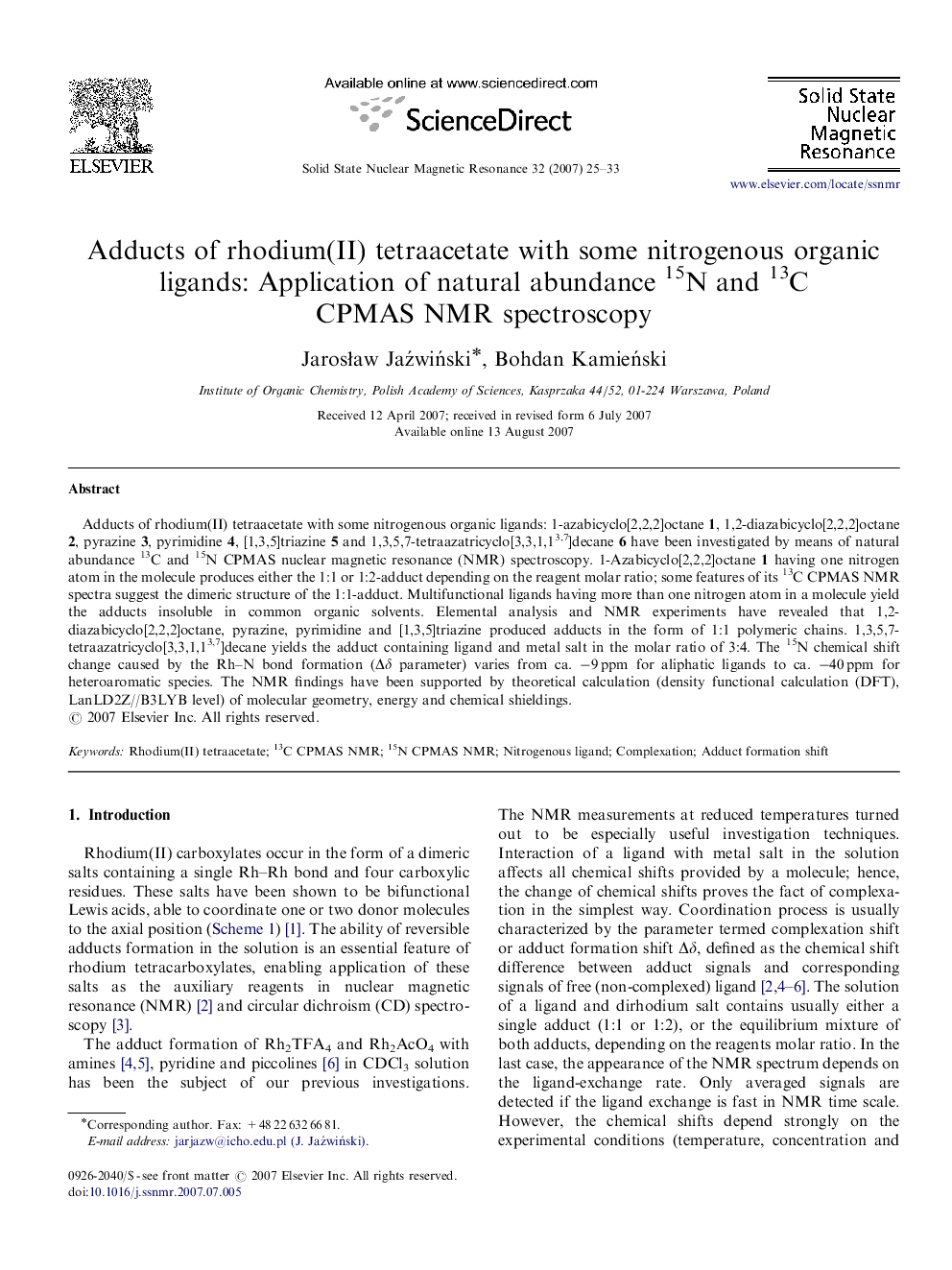| Article ID | Journal | Published Year | Pages | File Type |
|---|---|---|---|---|
| 5420753 | Solid State Nuclear Magnetic Resonance | 2007 | 9 Pages |
Abstract
Adducts of rhodium(II) tetraacetate with some nitrogenous organic ligands: 1-azabicyclo[2,2,2]octane 1, 1,2-diazabicyclo[2,2,2]octane 2, pyrazine 3, pyrimidine 4, [1,3,5]triazine 5 and 1,3,5,7-tetraazatricyclo[3,3,1,13,7]decane 6 have been investigated by means of natural abundance 13C and 15N CPMAS nuclear magnetic resonance (NMR) spectroscopy. 1-Azabicyclo[2,2,2]octane 1 having one nitrogen atom in the molecule produces either the 1:1 or 1:2-adduct depending on the reagent molar ratio; some features of its 13C CPMAS NMR spectra suggest the dimeric structure of the 1:1-adduct. Multifunctional ligands having more than one nitrogen atom in a molecule yield the adducts insoluble in common organic solvents. Elemental analysis and NMR experiments have revealed that 1,2-diazabicyclo[2,2,2]octane, pyrazine, pyrimidine and [1,3,5]triazine produced adducts in the form of 1:1 polymeric chains. 1,3,5,7-tetraazatricyclo[3,3,1,13,7]decane yields the adduct containing ligand and metal salt in the molar ratio of 3:4. The 15N chemical shift change caused by the Rh-N bond formation (Îδ parameter) varies from ca. â9 ppm for aliphatic ligands to ca. â40 ppm for heteroaromatic species. The NMR findings have been supported by theoretical calculation (density functional calculation (DFT), LanLD2Z//B3LYB level) of molecular geometry, energy and chemical shieldings.
Keywords
Related Topics
Physical Sciences and Engineering
Chemistry
Physical and Theoretical Chemistry
Authors
JarosÅaw JaźwiÅski, Bohdan KamieÅski,
